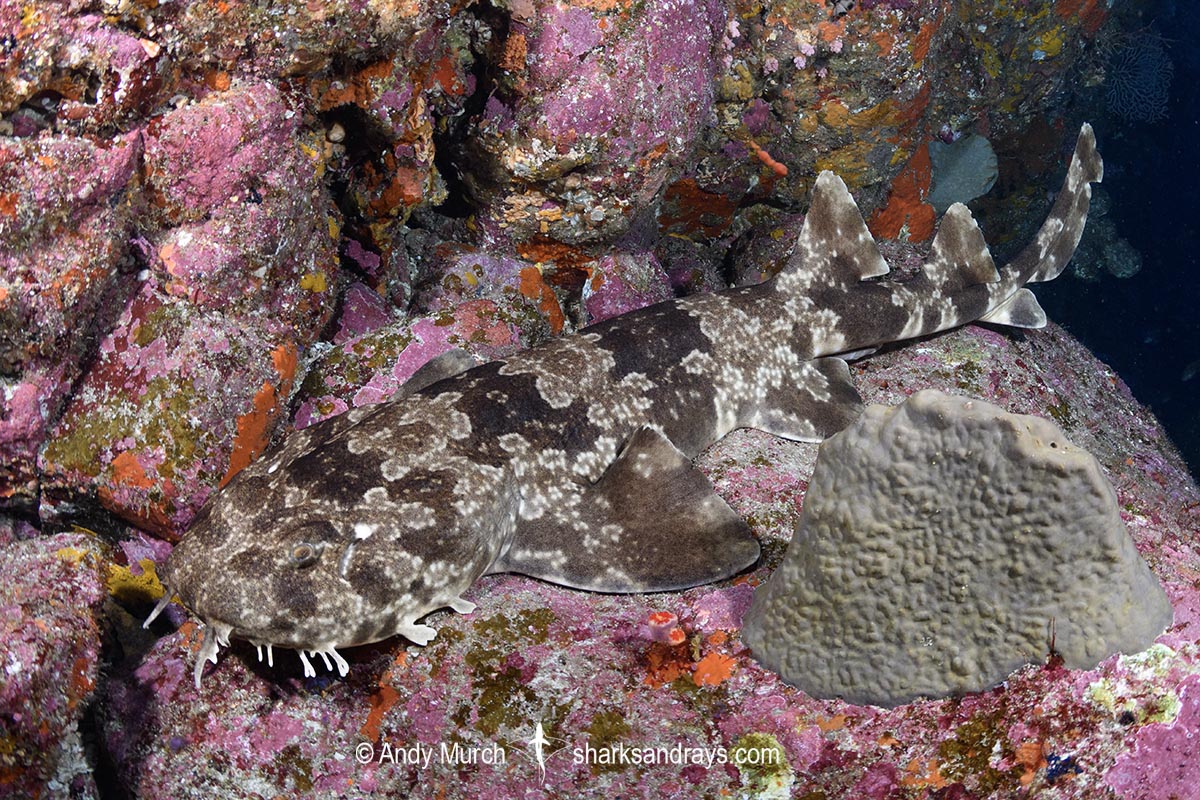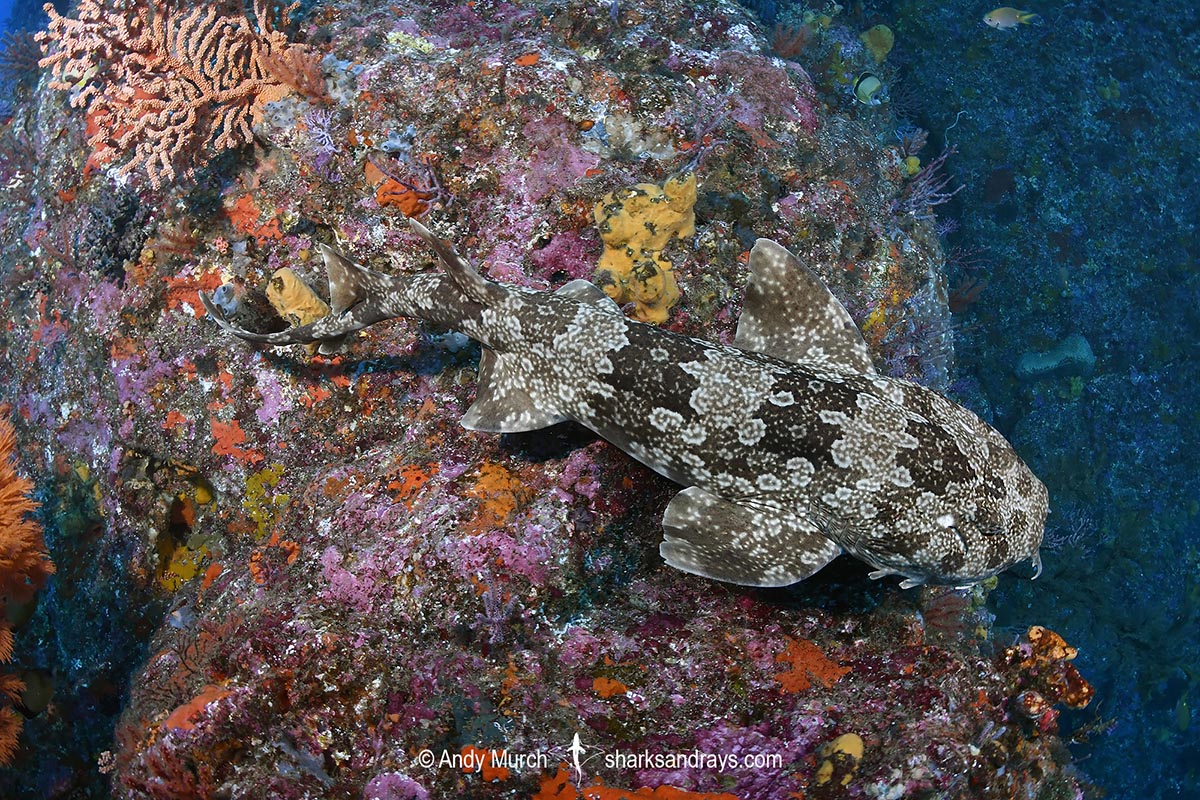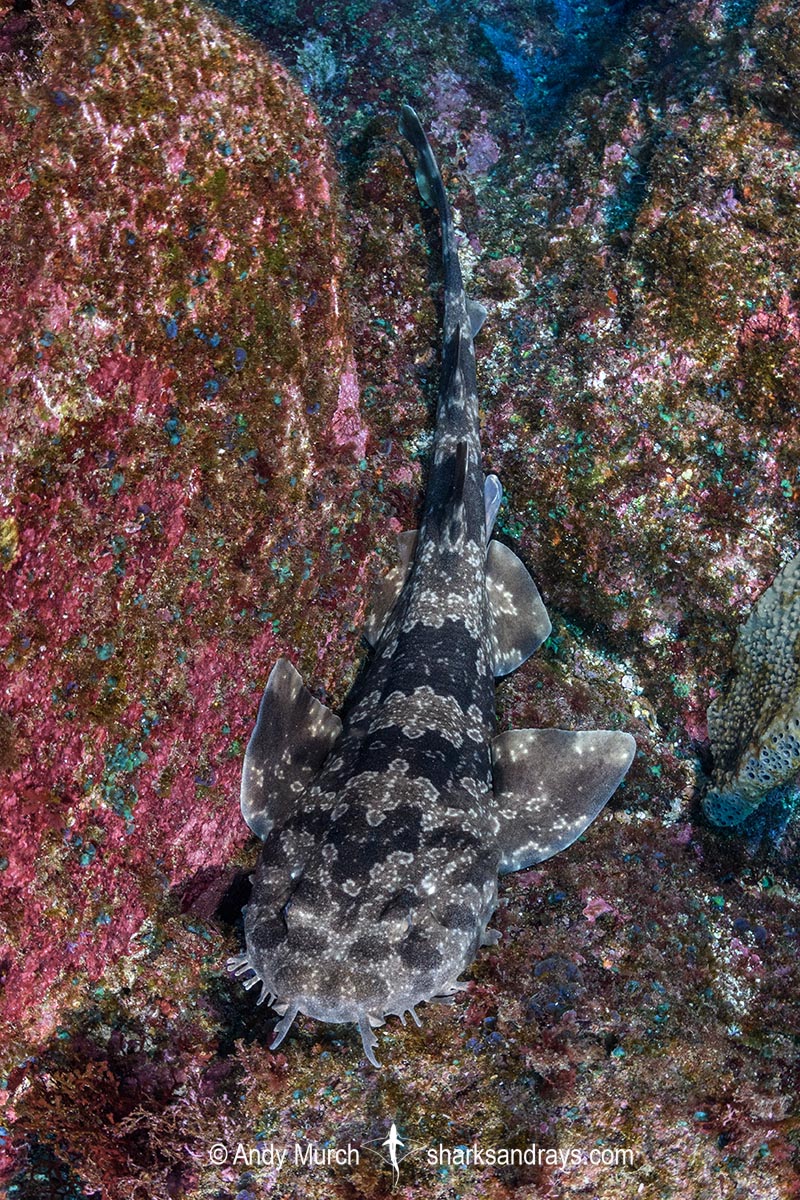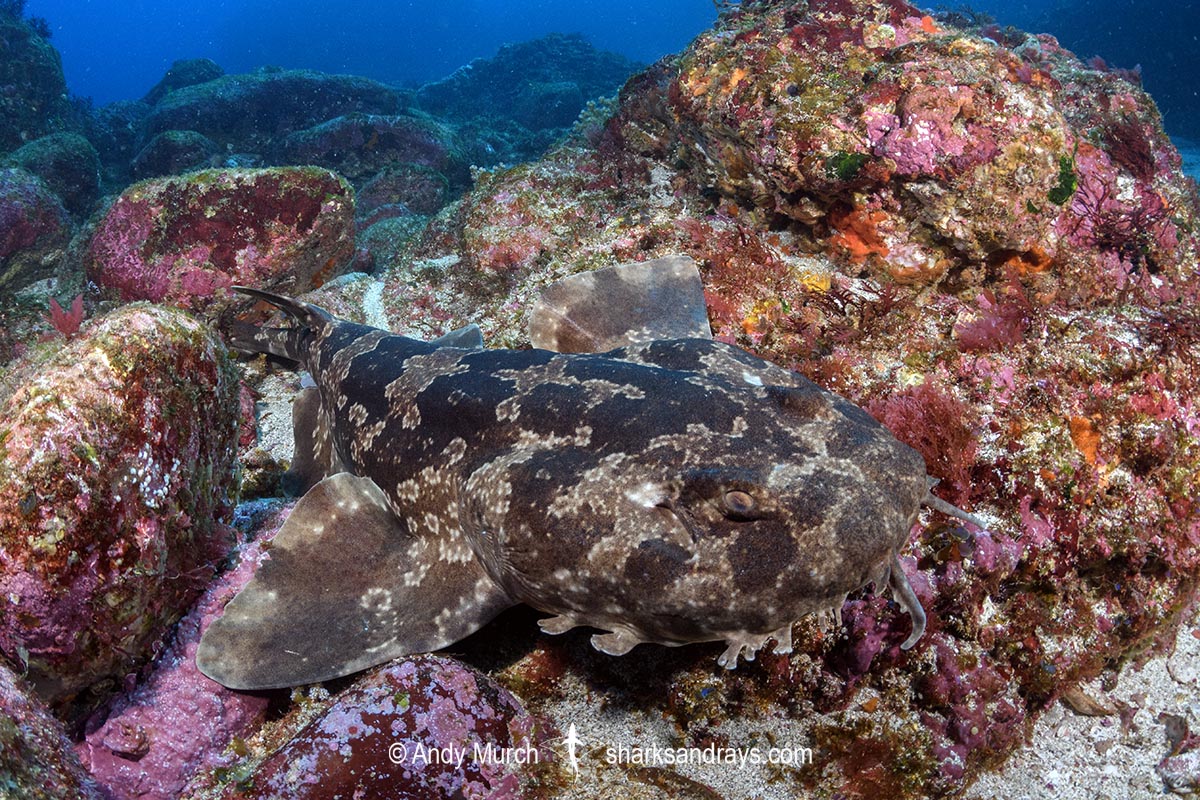Common names
Japanese Wobbegong.
Binomial
Orectolobus japonicus.
Synonyms
None.
Identification
A small species of wobbegong with five groups of dermal lobes (skin flaps) on each side of head. Inner group attached to barbells, second group thin and small, third group long and weakly branched, fourth and fifth groups short and wide. Barbells long with fleshy bases.
Two equally sized dorsal fins. First dorsal origin over pelvic fin insertion. Caudal fin has a subterminal notch and a rounded terminal notch at midpoint of terminal margin.
No warty tubercles on head or body. Body light brown with many small pale spots, and 9 dark brown saddles with irregular, corrugated, pale edges formed by clusters of small pale dots.
Size
Maximum length 118cm. Size at birth approximately 21-23cm.

Conservation Status
LEAST CONCERN
The Japanese wobbegong’s preference for rocky habitats provides some protection against capture in large scale trawl fisheries, but it is usually retained when caught in hook and line fisheries for human consumption.
In Taiwan, recreational fishing pressure has increased in effort over the past 10 years.
In Viet Nam, Orectolobus japonicus is occasionally taken as bycatch by trawl and bottom longline at depths of 50–120m. Due to increasing fishing pressure with little or no government oversight, most species in Vietnam are considered over-exploited.
Destruction of reef habitat has also impacted this species.

Habitat
Temperate seas. Found on rocky and coral reefs from the intertidal zone to 200m.
Distribution
The Japanese wobbegong is found around the coastlines of Japan, Korea, Mainland China, Taiwan, and Vietnam.
Reproduction
Ovoviparous and lecithotrophic, i.e. the foetus is solely nourished by the yolk within the egg case.
Diet
Feeds on bony fishes, elasmobranchs (skates, sharks, and egg cases), cephalopods, and shrimp.
Wobbegongs are ambush predators that remain motionless while camouflaged against the reef. When an appropriately sized fish swims in front of its disguised mouth, the wobbegong lunges forward simultaneously stretching its mouth open. The process sucks water and fish into its mouth, which immediately snaps shut again, trapping its prey with needle-like teeth.
Behavior
Nocturnal. Rests by day on reef ledges or in crevices.
Reaction to divers
Easy to approach. Remains at rest, relying on camouflage unless harassed.
Diving logistics
The Japanese Wobbegong is quite difficult to find in most areas but it is seasonally common (during the cooler months) at Mikomoto Island on the southeast coast of the Izu Peninsula. Big Fish Expeditions runs a yearly Japanese shark diving expedition that focuses on this species and many other Japanese endemic elasmobranchs.
What’s new
View our full list of updates
Similar species
Other Wobbegong Sharks There are no other members of the family Orectolobidae that enter Japanese waters. If the Japanese wobbegong’s range extends to the Philippines, there may be some crossover with the Indonesian wobbegong or perhaps even with un-described species endemic to the Philippines.







